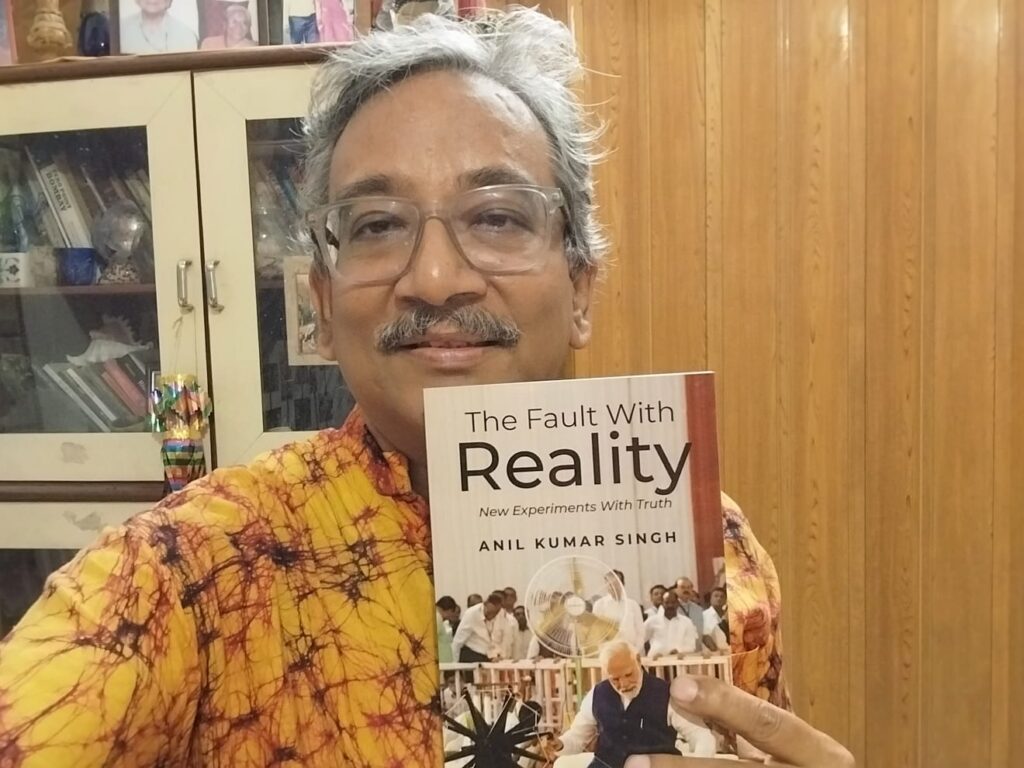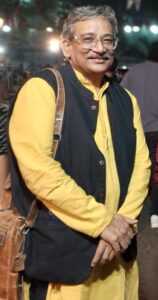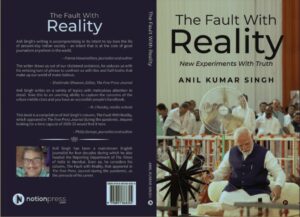
Book Review: The Fault With Reality

Anil Kumar Singh is the proverbial journalist – questioning, inquisitive, well-informed, and focused on issues concerning the common man. Armed with these attributes he takes us on a journey through some eventful years of the early part of this decade in his debut book in the non-fiction category ‘The Fault With Reality’.
The book contains about 40 columns which he wrote in 2020, through part of 2022, in a national newspaper based out of Mumbai. So, he wrote during the COVID-19 pandemic about the response of the various state and central agencies to the challenges posed by the virus. His columns contained a wealth of knowledge on topics as diverse as the trees planted in the suburbs of Mumbai and Navi Mumbai, nesting places of migratory birds, water woes, coastal zone rules, and Indian love poems.
Anil also places his lens on the politics of the day, being critical of the central government on many counts, particularly in not being able to bridge the gaps in development inherited from the Nehruvian era, focusing on what he calls grandiose but economically unviable projects and the subversion of democratic institutions.
He laments that the media is largely no longer asking tough questions to the government. He comes down heavily on the “divisive” politics being practised in the country. He ends his column on ‘religious sentiments’ by saying that ours is still a fragile society and “we have to end this bigotry and hatred because if we don’t learn to live together, we will certainly die together.”
He says that he decided to publish the book when his column was abruptly stopped by the newspaper management. “I wanted everyone to read my columns, so I saved up photostat copies of newspaper cuttings and kept them under my mattress. So, you can say I had been sleeping over it for the past year or so,” he informs.
Anil has chosen 40 out of the 100 odd columns that appeared in print originally.
“Ironically, my last column, ‘India isn’t a safe place for comedians either’ (May 7, 2022), chastised the Indian media for its discreet silence on the stifling of dissent, instead preferring to cite a foreign agency’s report,” writes Anil in the ‘Foreword’ of the book.
“Today, when information is indistinguishable from disinformation, analysis from perception management, fact from fiction, there’s no one to warn us.” There’s a fault with reality, don’t adjust your mind,” explains Anil, referring to the title of his book and column.
Anil has been a mainstream English journalist for over four decades during which he was the Metro Editor of the flagship Mumbai edition of The Times of India for four years. He has chronicled Bombay, which has been his home, till it became Mumbai, and covered the major events in the city – the post-Babri riots, the ensuing serial blasts, the deluge of July 26, 2005, the 2006 blasts in local trains, mills turning into malls, the 2008 terrorist attack on Mumbai, Maharashtra politics and many more such happenings. He is now an independent journalist and journalism teacher.
The Fault with Reality is also an important document on Mumbai and its future. Mumbai may have been one of the most important cities in the country for the past hundred years or so, showing sharp economic growth, but Anil says that now there is a need to reimagine the city for the new millennium.
“Mumbai has all it takes to be a beautiful city, the sea and the sandy stretches, the lakes and the lagoons, the hills and the forests, the glitz and the glamour, the moolah, and the magic. And unlike other metros, Mumbai comes into its own at night. The problem however is that the city is unable to project itself; it’s a vivacious young woman with a bad dress sense and messy make-up,” opines Anil in the column dedicated to the city. He has made some valuable suggestions, for example, the compactness of Mumbai can be used to its advantage when it comes to beautification. “Look at Surat which went from ‘badsurat’ (ugly) to ‘khoobsurat’ (beautiful) in five years. But we must remember to improve slums as well, otherwise the next pandemic will explode in our faces. Purishapuri, or toilet city, is a tag we have worked hard to get rid of,” writes Anil.
“There is a dire need to harness its amazing energy, to tap its immense wealth but for that, we need to think straight, think big, and have a grand plan. The sugar belt satraps who rule the state have no such dreams. Now, it is for those who have grown up in Mumbai to give back something to the city,” he proposes. He recommends that the Shiv Sena with its roots in Mumbai and its hold over the municipal corporation is best suited to do this. In another column, he advocates protecting the heritage of Mumbai. Among the crowded lanes, the glamour and fast-paced life are hidden gems that connect us to the past. The Victorian buildings, the important museums, the ancient caves and temples, and medieval forts, Mumbai has them all, he reminds us. He advocates for more open space per person, and conservation of wetlands to save Mumbai’s future.
Anil opens up about many such issues which are bound to prove prophetic. We can safely refer back to his columns sometime in the future and regret that we should have corrected these problems as and when they arose.
So, in that sense, journalists turning authors is good for keeping an authentic record of changes in society. And a trend towards publishing is slowly picking up among media persons. Anil admits that he got inspired to publish the book when he saw young journalists publishing about their experiences.
“I hope to continue with my publishing journey. I recall the words of veteran journalist Kalpana Sharma, who, while speaking at a book release function at the Mumbai Press Club many years ago, advised that journalists should publish, but they should not try to imitate researchers and historians. Their journalistic skills and abilities will carry the book through,” he says and reveals that these words always motivate him. Anil is planning his second book on Navi Mumbai.
*Senior journalist






